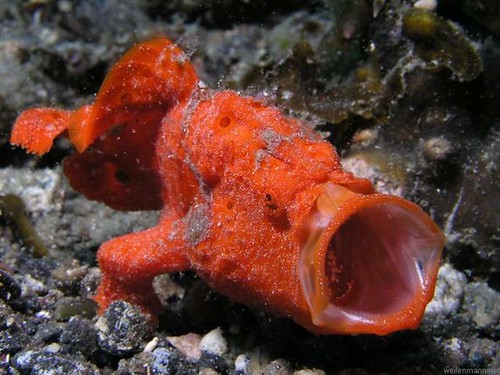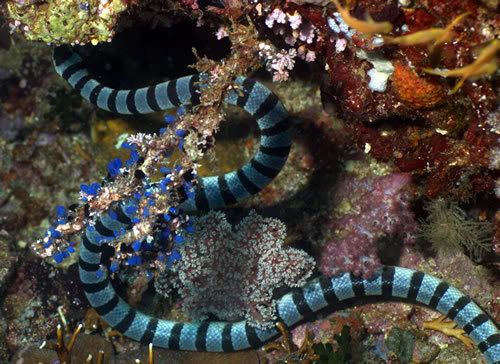 Pistol Shrimps are tiny creatures with a deadly weapon. They are capable of shooting supersonic blasts from their fingertips with enough force to instantly stun or kill their prey.
Pistol Shrimps are tiny creatures with a deadly weapon. They are capable of shooting supersonic blasts from their fingertips with enough force to instantly stun or kill their prey.You may notice that one claw of a pistol shrimp is much larger than the other, and very strangely shaped. This claw serves as both its lethal weapon, and its voice. This claw can be forcefully snapped shut, shooting a jet of water out at such a high speed that it actually vaporizes the water. This causes a small air bubble to form. The bubble collapses with enough force to send concussive shockwaves capable of stunning and incapacitating prey.
 A pistol shrimp will lie in wait under a rock or in a burrow until food comes along. When it is in range, the shrimp will forcefully snap its oversize claw shut, shooting out sonic waves that incapacitate its prey. The helpless victim is dragged unconscious into the burrow and eaten by the pistol shrimp.
A pistol shrimp will lie in wait under a rock or in a burrow until food comes along. When it is in range, the shrimp will forcefully snap its oversize claw shut, shooting out sonic waves that incapacitate its prey. The helpless victim is dragged unconscious into the burrow and eaten by the pistol shrimp. Another unusual thing about pistol shrimps is that they often allow a fish to live with them. Certain kinds of goby fish often share burrows with pistol shrimp. The fish serves as a guard dog, protecting the shrimp from bigger predators. In return, the pistol shrimp works hard to keep the burrow clean and excavate their home.
Another unusual thing about pistol shrimps is that they often allow a fish to live with them. Certain kinds of goby fish often share burrows with pistol shrimp. The fish serves as a guard dog, protecting the shrimp from bigger predators. In return, the pistol shrimp works hard to keep the burrow clean and excavate their home.


















